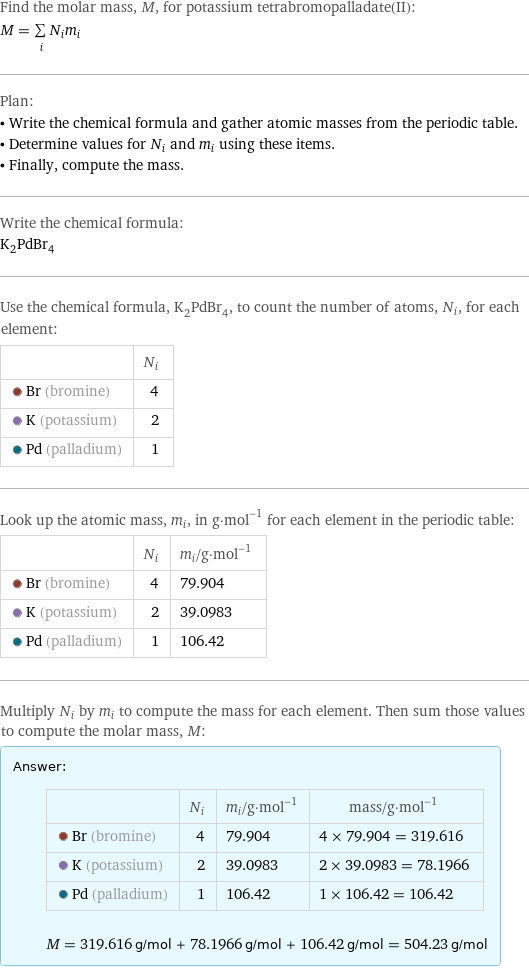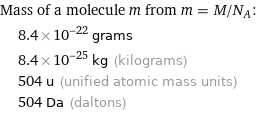Input interpretation

potassium tetrabromopalladate(II) | molar mass
Result

Find the molar mass, M, for potassium tetrabromopalladate(II): M = sum _iN_im_i Plan: • Write the chemical formula and gather atomic masses from the periodic table. • Determine values for N_i and m_i using these items. • Finally, compute the mass. Write the chemical formula: K_2PdBr_4 Use the chemical formula, K_2PdBr_4, to count the number of atoms, N_i, for each element: | N_i Br (bromine) | 4 K (potassium) | 2 Pd (palladium) | 1 Look up the atomic mass, m_i, in g·mol^(-1) for each element in the periodic table: | N_i | m_i/g·mol^(-1) Br (bromine) | 4 | 79.904 K (potassium) | 2 | 39.0983 Pd (palladium) | 1 | 106.42 Multiply N_i by m_i to compute the mass for each element. Then sum those values to compute the molar mass, M: Answer: | | | N_i | m_i/g·mol^(-1) | mass/g·mol^(-1) Br (bromine) | 4 | 79.904 | 4 × 79.904 = 319.616 K (potassium) | 2 | 39.0983 | 2 × 39.0983 = 78.1966 Pd (palladium) | 1 | 106.42 | 1 × 106.42 = 106.42 M = 319.616 g/mol + 78.1966 g/mol + 106.42 g/mol = 504.23 g/mol
Unit conversion

0.50423 kg/mol (kilograms per mole)
Comparisons

≈ 0.7 × molar mass of fullerene ( ≈ 721 g/mol )

≈ 2.6 × molar mass of caffeine ( ≈ 194 g/mol )

≈ 8.6 × molar mass of sodium chloride ( ≈ 58 g/mol )
Corresponding quantities

Mass of a molecule m from m = M/N_A: | 8.4×10^-22 grams | 8.4×10^-25 kg (kilograms) | 504 u (unified atomic mass units) | 504 Da (daltons)

Relative molecular mass M_r from M_r = M_u/M: | 504